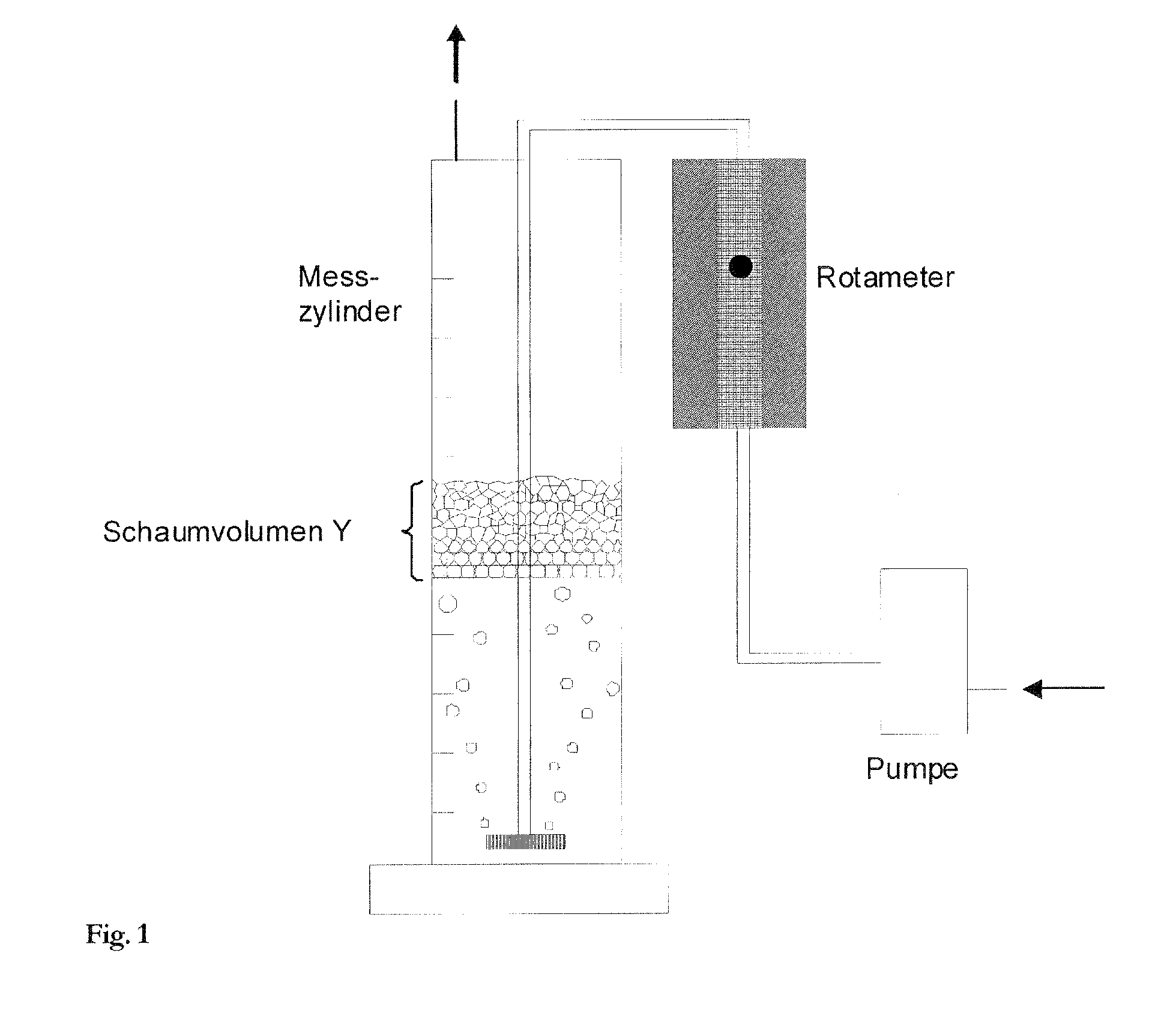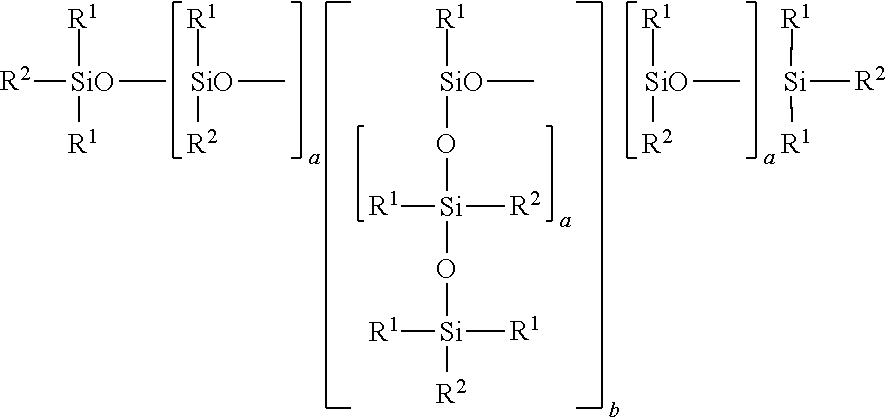Use of Self-Crosslinked Siloxanes for the Defoaming of Liquid Hydrocarbons
a technology of liquid hydrocarbons and crosslinked siloxanes, which is applied in the direction of liquid degasification, dewatering/demulsification with chemical means, separation processes, etc., can solve the problems of reducing the capacity of the separation apparatus, reducing the quality of separation, and reducing the silicon conten
- Summary
- Abstract
- Description
- Claims
- Application Information
AI Technical Summary
Benefits of technology
Problems solved by technology
Method used
Image
Examples
example 1
SYNTHESIS EXAMPLES
S1 (Starting Material for Synthesis Example S3)
Production of an Equilibrate According to Formula (I)
[0171]3.1 g of divinyltetramethyldisiloxane, 0.98 g of a multiple-centrally-positioned hydrosiloxane (15.7 eq / kg of SiH), 194.7 g of D5 and 0.12 ml of trifluoromethanesulfonic acid are used as initial charge in a multi-necked flask equipped with stirrer apparatus, nitrogen supply and reflux condenser, and are stirred for 24 hours at room temperature. After complete equilibration, the mixture is neutralized by addition of 4.0 g of sodium hydrogencarbonate within 2 hours, and then filtered. A colourless, clear silicone equilibrate was obtained.
S2: Production of an Equilibrate According to Formula (II), R1: Me and Phenyl)
[0172]13.33 g of a multiple-centrally-positioned hydrosiloxane (15.7 eq / kg of SiH), 65.05 g of D5, 21.6 g of a polymethylphenylsiloxane (500 cSt, ABCR) and 0.1 ml of trifluoromethanesulfonic acid are used as initial charge in a multi-necked flask equipp...
example 2
Usage Example in the Form of Antifoam in Processes above 500° C.
[0191]A glass coker apparatus can be used to gain understanding of foam formation and defoaming under coking conditions, these being the conditions for cracking processes subject to high temperatures in what is known as a delayed coker (“Foam Model for the Delayed Coker Pilot Unit”, Pradipta Chattopadhyay, The University of Tulsa, Dissertation 2006).
[0192]The system for simulating the coking processes is a 250 ml distillation apparatus with side arm (water-cooled) and a vessel to collect the decomposition products. The heating jacket, which encloses about half of the glass flask, can be equipment used by Aldrich (Glas-Col Series STM heating mantle), which can produce a temperature of up to 650° C. Once the liquid requiring defoaming has been added, 1 g of boiling chips is added. The closure system of the distillation apparatus has two apertures, one for temperature control by means of digital thermometer, while the othe...
PUM
| Property | Measurement | Unit |
|---|---|---|
| Temperature | aaaaa | aaaaa |
| Percent by mass | aaaaa | aaaaa |
Abstract
Description
Claims
Application Information
 Login to View More
Login to View More - R&D
- Intellectual Property
- Life Sciences
- Materials
- Tech Scout
- Unparalleled Data Quality
- Higher Quality Content
- 60% Fewer Hallucinations
Browse by: Latest US Patents, China's latest patents, Technical Efficacy Thesaurus, Application Domain, Technology Topic, Popular Technical Reports.
© 2025 PatSnap. All rights reserved.Legal|Privacy policy|Modern Slavery Act Transparency Statement|Sitemap|About US| Contact US: help@patsnap.com



